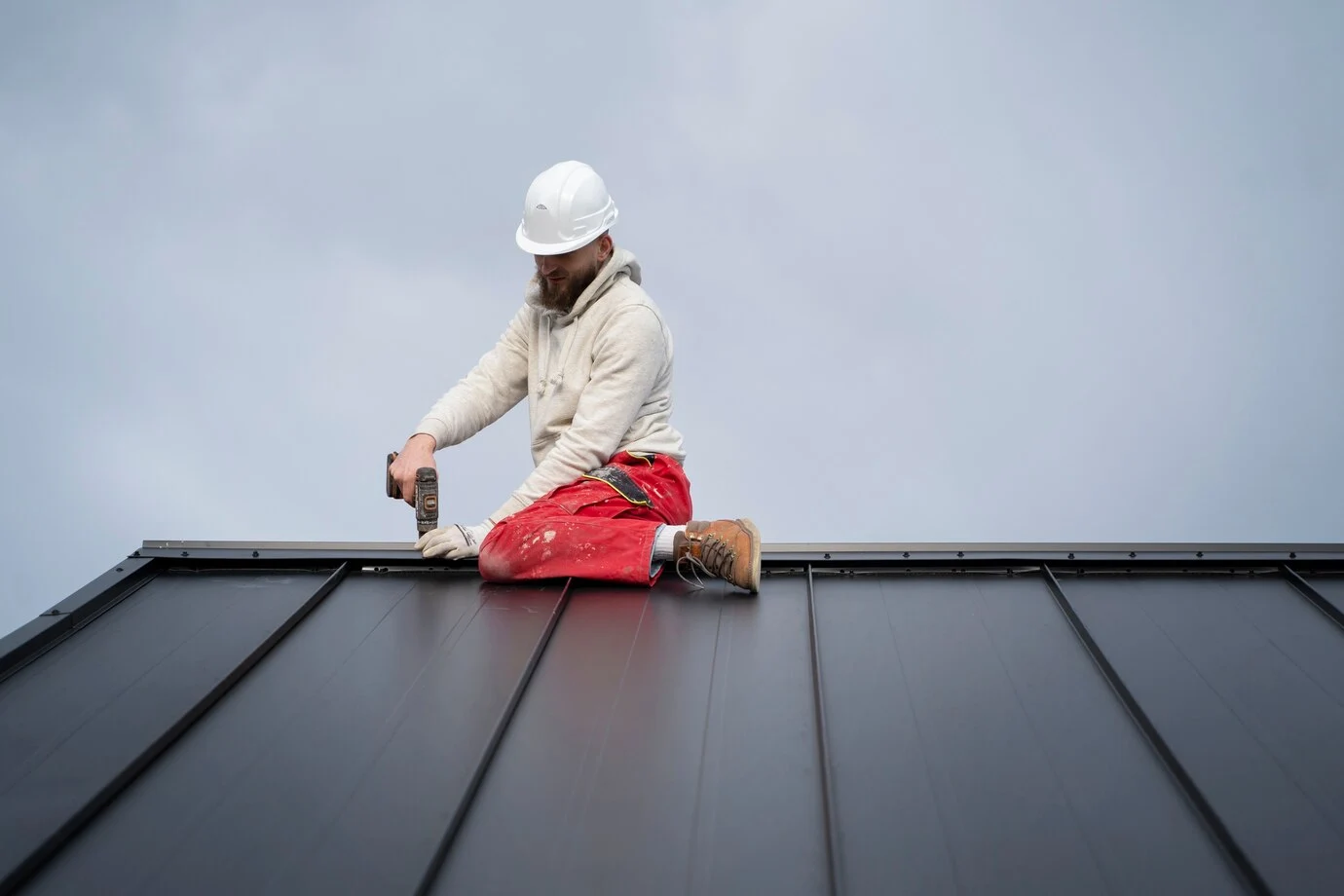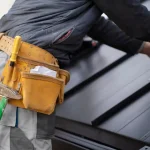Buying your first home is an exciting milestone. However, it comes with a lot of responsibilities and decisions, especially when it comes to your roof. A roof is one of the most critical components of your home, protecting you and your belongings from the elements. This guide will walk you through everything you need to know about roofing as a first-time homebuyer, ensuring you make informed decisions and maintain a safe and secure home.
Understanding Your Roof
Types of Roofing Materials
Roofs come in various materials, each with its benefits and drawbacks. Here are some common types:
- Asphalt Shingles: These are the most popular due to their affordability and ease of installation. They typically last 15-30 years. According to the Asphalt Roofing Manufacturers Association (ARMA), proper maintenance can extend their lifespan (ARMA).
- Metal Roofing: Known for durability and longevity, metal roofs can last 40-70 years. They are resistant to extreme weather and fire.
- Tile Roofing: Often made of clay or concrete, tile roofs are durable and can last over 50 years. They are heavier and may require additional structural support.
- Wood Shingles/Shakes: Offering a natural look, wood roofs last around 30 years but require more maintenance to prevent mold and rot.
- Slate Roofing: Extremely durable and long-lasting (up to 100 years), slate is also one of the most expensive options.
Roof Structure
Your roof’s structure includes several layers, each playing a vital role:
- Decking: The base layer attached to the rafters, providing a surface for other roofing materials.
- Underlayment: A protective barrier that prevents water from penetrating the decking.
- Flashing: Metal pieces that seal roof edges, valleys, and joints, preventing water infiltration.
- Ventilation: Proper ventilation is crucial for preventing moisture buildup and extending your roof’s lifespan.
Signs Your Roof Needs Attention
Common Roof Problems
Knowing the signs of roof problems can save you from costly repairs.
Here are some common issues:
- Leaks and Water Damage: Water stains on ceilings or walls indicate a leak. Addressing leaks promptly prevents further damage.
- Missing or Damaged Shingles: Shingles can be damaged by weather or age. Missing shingles expose your roof to leaks.
- Sagging Roof: A sagging roof is a serious issue indicating structural problems. Immediate inspection and repair are necessary.
- Mold or Moss Growth: Mold and moss can damage your roof and lead to leaks. Regular cleaning helps prevent their growth.
- Granule Loss: Asphalt shingles lose granules over time. Excessive granule loss reduces the shingles’ effectiveness.
When to Replace Your Roof
Most roofs need replacing every 20-30 years, depending on the material and climate. Regular inspections help determine when replacement is necessary. The National Roofing Contractors Association (NRCA) recommends biannual inspections, especially after severe weather events (NRCA).
Hiring a Roofing Contractor
Choosing the Right Contractor
Hiring a reputable roofing contractor ensures quality work.
Here are steps to find the right one:
- Get Recommendations: Ask friends, family, and neighbors for recommendations. Online platforms like Angie’s List provide reviews and ratings for local contractors (Angie’s List).
- Check Credentials: Verify the contractor’s license, insurance, and certifications. The NRCA and local building departments are good resources for this information.
- Get Multiple Quotes: Obtain at least three quotes to compare prices and services. Beware of unusually low bids, which may indicate subpar materials or workmanship.
- Read Reviews: Check online reviews on sites like Angie’s List and the Better Business Bureau to gauge customer satisfaction.
- Ask for References: A reputable contractor will provide references from past clients. Contact them to ask about their experience.
Questions to Ask Potential Contractors
- How long have you been in business?
- Do you have experience with my type of roof?
- Can you provide a written estimate?
- What warranties do you offer?
- How will you handle unexpected issues?
Roof Maintenance Tips
Regular Inspections
Regular roof inspections help catch problems early. Inspect your roof twice a year and after severe weather. Look for:
- Damaged Shingles: Replace missing or damaged shingles promptly.
- Debris Buildup: Remove leaves, branches, and other debris to prevent damage and water buildup.
- Gutter Maintenance: Clean gutters regularly to ensure proper drainage and prevent water damage.
Cleaning Your Roof
Cleaning your roof extends its lifespan and maintains its appearance.
Here are some tips:
- Use the Right Tools: Use a soft-bristle brush and mild detergent to clean your roof. Avoid pressure washers, which can damage shingles.
- Remove Moss and Algae: Apply a moss and algae remover to prevent growth. Trim overhanging branches to reduce shade and moisture.
- Check for Damage: While cleaning, inspect your roof for damage and make necessary repairs.
Preventative Measures
- Install a Roof Vent: Proper ventilation prevents moisture buildup and extends your roof’s lifespan.
- Trim Trees: Trim overhanging branches to prevent damage from falling limbs and reduce debris buildup.
- Insulate Your Attic: Proper insulation reduces heat buildup and prevents ice dams in winter.
Understanding Roofing Warranties
Types of Warranties
Roofing warranties protect your investment.
Here are common types:
- Manufacturer’s Warranty: Covers defects in roofing materials. Duration varies by manufacturer and product.
- Workmanship Warranty: Covers installation errors. Provided by the contractor, it typically lasts 1-10 years.
Reading the Fine Print
Understand your warranty coverage. Pay attention to:
- Exclusions: Know what is not covered, such as damage from extreme weather or improper maintenance.
- Maintenance Requirements: Follow maintenance guidelines to keep your warranty valid.
- Transferability: Some warranties can be transferred to new owners if you sell your home.
Budgeting for a New Roof
Cost Factors
Roof replacement costs vary based on:
- Material: Asphalt shingles are the most affordable, while slate and metal are more expensive.
- Size: Larger roofs require more materials and labor.
- Pitch and Complexity: Steep or complex roofs are more challenging and costly to replace.
- Location: Labor and material costs vary by region.
Financing Options
Explore financing options to manage costs:
- Home Equity Loan: Use your home equity to finance your roof replacement.
- Personal Loan: Unsecured loans can cover roof replacement costs.
- Roofing Company Financing: Some contractors offer financing plans.
Environmental Considerations
Energy Efficiency
An energy-efficient roof reduces your energy bills and environmental impact.
Consider these options:
- Cool Roofs: Reflect more sunlight and absorb less heat, reducing cooling costs.
- Insulation: Proper insulation reduces heat loss in winter and heat gain in summer.
- Solar Panels: Installing solar panels can offset energy costs and reduce your carbon footprint.
Sustainable Roofing Materials
Choose sustainable roofing materials for an eco-friendly home:
- Metal Roofing: Made from recycled materials and fully recyclable at the end of its life.
- Clay and Concrete Tiles: Durable and recyclable, with a long lifespan.
- Recycled Shingles: Made from recycled materials, offering an eco-friendly alternative to traditional shingles.
Conclusion
As a first-time homebuyer, understanding your roof’s needs and maintenance is crucial. Regular inspections, proper maintenance, and informed decisions when hiring a contractor will keep your roof in top condition. Remember, a well-maintained roof protects your investment and ensures a safe and comfortable home for years to come.
Related Articles










